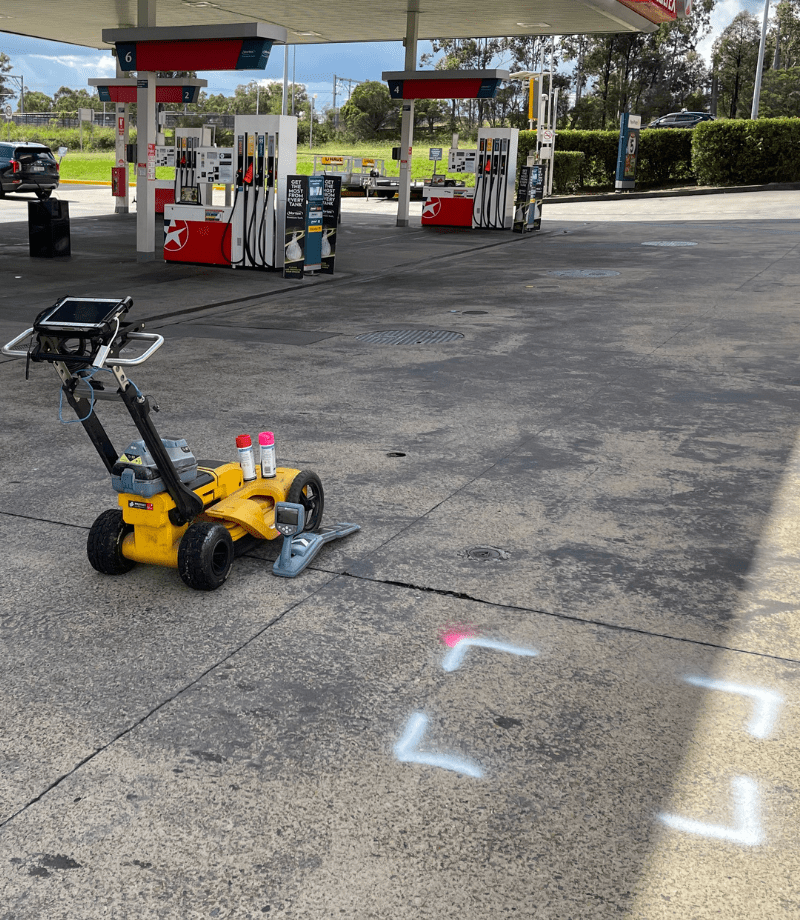Ground Penetrating Radar (GPR) has become a go-to tool for subsurface exploration across New South Wales, and at Smartscan Locators, we often get asked, “Just how accurate is GPR?” Whether you’re planning a construction project, utility survey, or environmental study, understanding the accuracy of GPR can make a significant difference in decision-making and project outcomes. Let’s break down how accurate GPR is, what factors affect its precision, and how we ensure the best results for our clients.
About Smartscan Locators
Founded in 2018, Smartscan Locators began with a focus on small-scale locating projects and borehole clearances. Over the past five years, we have grown substantially, expanding our team to ten highly skilled professionals and diversifying our range of services. Today, we offer comprehensive solutions, specialising in utility locating and various forms of excavation. Our dedication to excellence and precision has propelled us to the forefront of the industry, establishing Smartscan Locators as a trusted and reliable partner for clients across New South Wales.
Our mission is to be the leading one-stop-shop for all early works site investigations. We take a proactive approach to resolving on-site challenges quickly, continuously improving our processes to maintain the highest safety and compliance standards. Through this commitment, we aim to deliver exceptional results, reinforcing Smartscan’s leadership in the Utility Investigation industry.
The Basics of GPR Accuracy
Ground Penetrating Radar works by emitting radar pulses into the ground and capturing the reflections from underground features. In ideal conditions, GPR can achieve accuracy within a few centimeters, providing highly detailed insights into what lies beneath the surface. However, accuracy is not a one-size-fits-all answer, as it can be influenced by various factors.
- Factors Affecting GPR Accuracy
Soil and Material Conditions – The type of material being scanned is one of the biggest factors in GPR accuracy. GPR performs best in dry, sandy soils that allow radar waves to penetrate smoothly. In contrast, clay or wet soils tend to absorb radar signals, reducing the depth of penetration and potentially affecting the clarity of the readings. - Depth of Target
GPR accuracy also varies depending on how deep the target lies. For shallow objects, GPR provides detailed, precise readings. However, the deeper the object, the weaker the radar signal becomes, potentially leading to less detail or, in some cases, missed objects. - Antenna Frequency
The type of antenna used also influences accuracy. High-frequency antennas (e.g., 900 MHz) provide greater resolution and are ideal for locating small or shallow objects, whereas lower frequency antennas (e.g., 200 MHz) can penetrate deeper but may lose detail. - Operator Skill and Interpretation
The skill of the operator is crucial to GPR accuracy. An experienced GPR technician can read subtle variations in the radar data and correctly interpret them. At Smartscan Locators, we pride ourselves on our well-trained technicians who understand the intricacies of GPR and know how to optimize accuracy based on project requirements.
Practical Accuracy Expectations for Different Applications
For most standard applications, such as locating underground utilities or concrete scanning, GPR can provide a high degree of confidence. Utility lines, pipes, cables, and rebar are usually identified with pinpoint accuracy, often within a few centimeters. In construction projects across NSW, this level of precision helps avoid costly damages or delays.
However, it is important to note that GPR is a complementary tool. When paired with other detection methods—such as electromagnetic locators—GPR can enhance the reliability of subsurface mapping, ensuring that nothing is overlooked.
How Smartscan Locators Ensures Accurate GPR Results
At Smartscan Locators, we provide GPR services throughout New South Wales, always aiming for the highest accuracy. We consider soil type, target depth, antenna selection, and our operators’ expertise to deliver reliable results. Our team takes the time to evaluate site-specific conditions before beginning any survey, ensuring we choose the best approach to maximize GPR performance.
The accuracy of Ground Penetrating Radar is highly impressive—when used correctly. Soil type, depth, and expertise are all factors that play a significant role in delivering precise readings. At Smartscan Locators, we leverage GPR’s capabilities to provide clients across NSW with accurate subsurface data, helping to make informed decisions and avoid potential issues.
Whether you’re preparing for excavation, utility mapping, or need concrete scanning, trust Smartscan Locators for detailed and accurate results. If you have questions about how GPR might work for your next project, feel free to reach out. We’re here to help.

